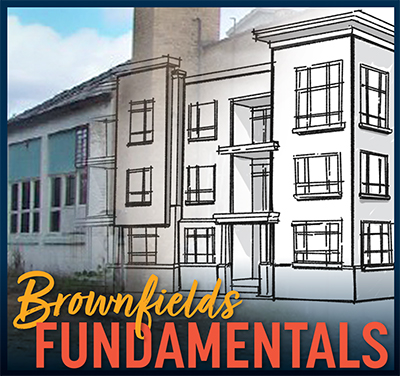RR Program Presentations & Training Library
The Remediation and Redevelopment Program is committed to providing timely, quality trainings and presentations to our customers and colleagues. Recordings of previous presentations, webinars and teleconferences are available below. Chrome and Edge are the recommended browsers for watching DNR webinar videos.
A list of upcoming presentations and trainings is available on the RR Program presentations & trainings webpage. If there is a topic you would like addressed in a future webinar, please contact Jodie Thistle.
Issues and Trends
Issues and trends webinars
The Issues & Trends training sessions cover a variety of technical and policy issues affecting environmental professionals, local government specialists and others whose work involves assistance or oversight by the RR Program.2024 series
Date Presentation Audio/Video Jan. 31, 2024 When Should a Site Investigation Enter Surface Water Webinar recording [VIDEO length 14:25] Nov. 11, 2024 Investigation of Vapor Intrusion Along the Conduit Pathway Webinar recording [Video length 1:27:08] 2023 series
Date Presentation Audio/Video Oct. 25, 2023 Vapor Intrusion in Wisconsin - 2023 Updates Webinar recording [VIDEO length 1:12:54] April 12, 2023 Ready for Reuse (RFR) Revolving Loan Funds Program Webinar recording [VIDEO length 1:07:12] 2022 series
Date Presentation Audio/Video Nov. 16, 2022 Passive Air Sampling for Vapor Intrusion Webinar recording [VIDEO length 1:07:12] June 16, 2022 Spring/Summer 2022 - RR Program Updates n/a 2020-2021 series
2017-2018 series
2016 series
2015 series
2014 series
*Due to a WisLine technical malfunction, the conference call was not recorded.
Consultants' Day
Consultants' Day 2017
Presentation topics included NR 700.11 required submittals, site investigation completeness, PAH reassessment, case closure reconsideration, modifications to continuing obligations, vapor intrusion outreach and more.
Video To navigate to specific presentations within the video, click the information button in the bottom right corner of the video screen to find the menu and then click on the presentation title. Consultants' Day 2017 [Video Length 5:17:06] Use Chrome or Edge Consultants' Day 2015
Department staff presented information and expectations related to key aspects of the NR 700, Wis. Adm. Code, rule series. The series of presentations below cover expectations for case closure, the newest guidance documents, emerging issues and more.
Local Government Days
2018 Brownfields Conference for Local Government
The DNR's RR Program hosted a day-long conference on May 10, 2018, for local government officials on brownfields redevelopment. This conference discussed the steps and procedures to get communities from a brownfield cleanup to a redevelopment groundbreaking.
2016 Brownfields 101 - Redevelopment Resources for Local Governments
The DNR's RR Program hosted a day-long seminar on Nov. 2, 2016, for local government officials on brownfield redevelopment. Experts discussed strategies and tools to help communities turn around and capitalize on underused or abandoned properties.
Presentations Tranformation: Downtown Stevens Point [PDF] Winner! Winner! Economic Impact of Brownfields Redevelopment in Wisconsin [PDF] Fundamentals of Wisconsin's Contamination Cleanup Law [PDF] Brownfields Toolbox: DNR's Programs and Products to Help you Successfully Redevelop Brownfields [PDF] Federal Resources for Brownfields Redevelopment [PDF] Ordinances and Acquisition: Control your Site, Control your Future [PDF] Going Blue at Brownfields: Use of Green Infrastructure for Storm Water Management [PDF] Inside the Mind of a Brownfield Developer (no presentation for this topic) Local Brownfield Redevelopment Leaders: Success Stories and Lessons Learned
Brownfields Fundamentals
-
The benefits of cleaning up and redeveloping brownfield properties are significant. Returning underused and unslightly commercial and industrial properties back to productive use protects public health and promotes community vitality. The term "brownfield" may not be completely familiar to you, but chances are good that there's one or more brownfield in your community.
Brownfields Fundamentals includes articles, webinars, and panel discussion on the basics of brownfields for communities interested in revitalizing brownfields but aren't sure where to start or need financial resources to make it happen.
RR Report Articles
Whatever the property, whether commercial or industrial, if the reuse of the property is hindered by suspected environmental contamination, it's a brownfield. But with support, vision and some imagination, that brownfield property might be a diamond in the rough; and redeveloping that property may have benefits that extend far beyond the property line.
State and federal financial assistance for brownfield revitalization is available in many forms for local governments. The DNR can help your community put all the pieces together, addresses environmental contamination and move these projects forward.
Among the variety of resources and assistance that the DNR can bring to the table to help towns and cities across the state address brownfield cleanup and redevelopment challenges is the DNR’s Ready for Reuse program. Since the DNR began offering the program in 2004, Ready for Reuse has funded 39 cleanup projects in Wisconsin to the tune of more than $11 million in awards.
5-Minute Webinars
The DNR’s series of on-demand Brownfields Fundamentals webinars cover brownfields planning, cleanup, liability, and other topics as part of a well-rounded crash course in Wisconsin brownfields redevelopment.
- Brownfields Overview [00:03:58]
- Planning [00:05:17]
- Locating Brownfields [00:05:50]
- Managing Environmental Liability [00:05:50]
- The Cleanup Process [00:03:24]
- Financial Resources [00:04:58]
Panel Discussions
Hear firsthand from Wisconsin communities and regional experts about the benefits, resources and best practices for brownfields projects.
Brownfields Assistance: Boosting Redevelopment with Fresh Funds [01:24:00]
A panel of experts from the U.S. Environmental Protection Agency, Wisconsin Economic Development Corporation, and the Kansas State University Technical Assistance for Brownfields program joined the DNR to discuss brownfields financial assistance available to Wisconsin local governments, with an emphasis on federal infrastructure funding.Local Governments and Brownfields: Best Practices and Lessons [01:26:00]
Experienced staff from four Wisconsin communities – Calumet County and the cities of Prairie du Chien, Manitowoc, and Appleton – shared best practices and lessons learned while navigating brownfield redevelopment projects.


